Smart Office Risks: Cyber Attacks and Personal Privacy

Smart offices, powered by IoT devices and advanced automation, offer efficiency and convenience—but they also introduce significant risks related to cyber attacks and employee privacy. Below are the most pressing threats, supported by recent industry analysis and real-world incidents.

Cyber Attack Risks in Smart Offices
- Expanded Attack Surface
- Every connected device—lighting, HVAC, access control, printers, cameras—becomes a potential entry point for attackers. The more devices on the network, the greater the number of vulnerabilities135.
- Attackers can exploit a single weak link to access the broader office infrastructure, often moving laterally across interconnected systems135.
- Common Vulnerabilities
- Weak or unchanged default passwords, outdated firmware, and unpatched software are frequent issues. These flaws are often overlooked during rapid integration of new technologies356.
- Poorly secured devices can be hijacked to disrupt building functions, steal sensitive data, or launch further attacks6.
- Operational Disruption and Ransomware
- Cyber attacks can shut down critical building systems, such as heating, cooling, or physical access controls. "Siegeware" attacks involve hackers taking over building automation systems and demanding ransom to restore operations6.
- Real-world examples include attacks that disabled heating in Finnish buildings and compromised U.S. water treatment plants, threatening both business continuity and occupant safety36.
- Third-Party and Supply Chain Risks
Personal Privacy Risks in Smart Offices
- Extensive Employee Data Collection
- Biometric and Sensitive Data Concerns
- Lack of Transparency and Consent
- Employees are often unclear about what data is being collected, how it is used, and who has access. Insufficient transparency can erode trust and morale4.
- There is increasing pressure to comply with privacy regulations (like GDPR), which require organizations to protect personal data and respect employee rights2.
- Potential for Data Misuse
- Collected data could be used for purposes beyond security or efficiency, such as performance monitoring or disciplinary actions, leading to ethical and legal concerns4.
Consequences of Inadequate Security
- Operational Disruption: Cyber attacks can halt business operations, lock employees out of buildings, or disrupt critical infrastructure36.
- Financial Loss: Breaches can result in ransom payments, regulatory fines, and the cost of system restoration37.
- Reputational Damage: Loss of trust from employees and clients can harm the organization's reputation and competitiveness23.
- Legal and Regulatory Penalties: Failure to comply with data privacy laws can result in significant fines and legal action27.
Summary Table: Key Smart Office Risks
| Risk Type | Description | Example Impact |
|---|---|---|
| Expanded Attack Surface | Multiple IoT devices create more entry points for hackers | Lateral movement across systems |
| Weak Security Practices | Default passwords, outdated software, poor patching | Device hijacking, data theft |
| Ransomware/Siegeware | Attackers take over building systems, demand ransom | Loss of heating, access, or safety |
| Third-Party Risks | Vendors/contractors with network access can be compromised | Major data breaches |
| Employee Surveillance | Sensors, cameras, biometrics collect sensitive data | Privacy concerns, morale issues |
| Data Misuse | Collected data used beyond intended purpose | Legal/ethical violations |
| Regulatory Non-Compliance | Failure to protect personal data or gain proper consent | Fines, lawsuits |
Smart offices must balance technological advancement with robust cybersecurity and privacy protections to safeguard both their operations and their employees’ rights1234567.

Securing Smart Offices: A Comprehensive Guide to Mitigating Cyber Risks
Smart offices, equipped with IoT devices and interconnected systems, enhance productivity but introduce critical cybersecurity vulnerabilities. From HVAC systems to access controls, every connected device can serve as an entry point for attackers. Below is a detailed strategy to secure smart offices, informed by recent breaches and expert recommendations.
1. Network Segmentation and Isolation
Why it matters: A compromised smart device can expose the entire office network.
- Create separate networks:
- Use VLANs (Virtual Local Area Networks): Segment IoT devices (e.g., smart lights, printers) to limit lateral movement during breaches34.
- Deploy firewalls and intrusion detection systems (IDS): Monitor traffic between segments and block unauthorized access attempts37.
2. Device Hardening and Lifecycle Management
Key vulnerabilities: Default passwords, outdated firmware, and unpatched software.
- Change default credentials: Over 50% of IoT breaches stem from unchanged defaults37.
- Enable automatic firmware updates: Prioritize devices with secure update mechanisms39.
- Disable unnecessary features: Close unused ports (e.g., SSH, Telnet) on smart devices to reduce attack surfaces37.
- Inventory management: Maintain a registry of all IoT devices, including purchase dates and end-of-life schedules9.
3. Robust Access Control and Authentication
Attack vectors: Stolen credentials, phishing, and brute-force attacks.
- Multi-factor authentication (MFA): Require MFA for accessing BMS, admin panels, and cloud dashboards347.
- Role-based access controls (RBAC): Limit privileges (e.g., HVAC technicians shouldn’t access security cameras)39.
- Physical access integration: Sync digital and physical access logs. Revoke badge access and IT credentials simultaneously when employees leave3.
4. Monitoring and Incident Response
Real-world example: The 2017 St. Louis Public Library ransomware attack disrupted access control systems for days1.
- Implement 24/7 network monitoring: Use tools like SIEM (Security Information and Event Management) to detect anomalies (e.g., unusual data spikes from a thermostat)34.
- Conduct penetration testing: Simulate attacks on smart devices to identify weaknesses9.
- Develop a breach response plan: Include procedures for isolating compromised devices and restoring backups9.
5. Employee Training and Phishing Defense
Risk factor: 38% of breaches involve compromised credentials, often via phishing3.
- Cybersecurity drills: Train staff to recognize phishing emails targeting smart office systems (e.g., fake HVAC vendor alerts)9.
- Clean desk policies: Prevent password exposure from unsecured notes or devices3.
- Reporting protocols: Ensure employees report suspicious activity (e.g., malfunctioning smart locks)9.
6. Vendor and Third-Party Risk Management
Case study: The 2013 Target breach originated from an HVAC vendor’s compromised credentials26.
- Vet suppliers: Choose vendors with strong security practices (e.g., encrypted communications, regular audits)79.
- Secure remote access: Require vendors to use VPNs with MFA when connecting to BMS34.
- Contractual obligations: Mandate liability clauses for breaches caused by third-party negligence2.
7. Encryption and Data Protection
- Encrypt data in transit: Use TLS/SSL for communications between devices and cloud platforms57.
- Secure APIs: Ensure building management APIs require authentication and rate-limiting to prevent abuse4.

Smart Office Security Checklist
| Category | Best Practices |
|---|---|
| Network | Segment networks, use VLANs, deploy firewalls/IDS |
| Devices | Change defaults, disable unused ports, enable auto-updates |
| Access | Enforce MFA, RBAC, physical-digital access sync |
| Monitoring | 24/7 SIEM, penetration testing, incident response plan |
| Training | Phishing simulations, clean desk policies, breach reporting |
| Vendors | VPNs for remote access, contractual security clauses |
Consequences of Inaction: Real-World Breaches
- Finnish heating system attack (2016): Hackers exploited smart heating controls, leaving residents without heat in winter2.
- Water treatment plant hack (2021): Attackers altered chemical levels via a compromised SCADA system2.
- Mirai botnet (2016): Hijacked IoT devices launched massive DDoS attacks, disrupting major websites3.
By adopting these measures, organizations can transform smart offices from cyber liability to secure, efficient workspaces. Proactive defense, continuous monitoring, and employee vigilance are critical in an era where even a coffee machine can become a hacker’s gateway36.
Citations:
- https://www.linkedin.com/pulse/unseen-risk-smart-buildings-why-automated-offices-andre-ripla-pgcert-8fuqe
- https://www.facilitiesdive.com/news/understanding-cyber-risk-in-smart-building-tech-RKSolutions-chris-barns/741006/
- https://cove.is/blog-press/10-cybersecurity-tips-for-stronger-office-building-security
- https://www.veridify.com/smart-building-cybersecurity-best-practices/
- https://www.iotforall.com/10-tips-to-secure-your-iot-devices-from-hackers
- https://www.metro-manhattan.com/blog/smart-office-buildings-innovative-concept-or-potential-cybersecurity-risk/
- https://www.pcbb.com/bid/2024-06-05-your-smart-devices-may-be-an-invitation-to-hackers
- https://eec.asu.edu/2024/03/28/smart-buildings-and-cybersecurity/
- https://www.market-inspector.co.uk/blog/2018/10/iot-security-in-smart-office
- https://pe.gatech.edu/blog/industry-trends/cybersecurity-panel
- https://www.connectwise.com/blog/cybersecurity/common-threats-and-attacks
- https://www.ibm.com/think/insights/cisos-list-human-error-top-cybersecurity-risk
- https://www.iotforall.com/privacy-challenges-in-smart-offices
- https://www.cttsonline.com/2025/03/17/the-hidden-cybersecurity-risks-of-smart-business-technology-and-how-to-fix-them/
- https://thesecuritycompany.com/the-insider/what-are-the-cyber-risks-and-threats-associated-with-smart-devices-at-home-and-at-work/
- https://www.calibre-furniture.co.uk/blog/ensuring-privacy-and-security-in-smart-offices
- https://www.trane.com/commercial/north-america/us/en/about-us/newsroom/blogs/smart-building-cybersecurity-risks-fears-and-solutions.html
- https://ovic.vic.gov.au/privacy/resources-for-organisations/internet-of-things-and-privacy-issues-and-challenges/
- https://ph.kddi.com/en/resources/knowledge/column-smart-office-03/
- https://www.nature.com/articles/s41598-023-30788-5
- https://iesmartsystems.com/common-office-security-risks/
- https://www.reddit.com/r/smarthome/comments/y2g28d/how_do_you_protect_your_smart_home_devices_from/
- https://cnltd.co.uk/how-to-secure-your-smart-office-or-home/
- https://www.cisa.gov/topics/cybersecurity-best-practices
- https://www.velocityokc.com/blog/member-news/securing-your-home-office-smart-cyber-security-practices-to-protect-your-business-and-your-income/
- https://www.fortinet.com/resources/cyberglossary/iot-best-practices
- https://lgms.global/smart-workplaces-securing-your-smart-devices-for-the-office/
- https://www.cisa.gov/resources-tools/resources/cybersecurity-best-practices-smart-cities
- https://www.cisecurity.org/insights/blog/6-simple-tips-for-securing-iot-devices
- https://www.cyber.gov.au/protect-yourself/securing-your-devices/how-secure-your-devices
- https://www.reddit.com/r/cybersecurity/comments/1jgl1td/what_are_the_best_cybersecurity_practices_for/
- https://service.uoregon.edu/TDClient/2030/Portal/KB/ArticleDet?ID=107859
- https://www.shredit.co.uk/en-gb/blog/cybersecurity/12-ways-to-make-your-home-office-cyber-secure
- https://onlinedegrees.sandiego.edu/top-cyber-security-threats/
- https://www.cepro.com/networking/new-research-uncovers-litany-of-privacy-security-issues-in-consumer-iot-devices/
- https://www.sentinelone.com/cybersecurity-101/cybersecurity/remote-working-security-risks/
- https://www.stevens.edu/news/iot-is-everywhere-improving-security-and-privacy-of-smart-technologies-and
- https://www.shredit.com/en-us/blog/12-ways-to-make-your-home-office-cyber-secure
- https://iotsecurityfoundation.org/how-to-protect-connected-home-devices-and-appliances-from-cyber-attacks/
- https://its.ny.gov/news/securing-your-smart-home-navigating-internet-things-part-ii
- https://www.linkedin.com/pulse/unseen-risk-smart-buildings-why-automated-offices-andre-ripla-pgcert-8fuqe
- https://www.iotforall.com/privacy-challenges-in-smart-offices
- https://www.facilitiesdive.com/news/understanding-cyber-risk-in-smart-building-tech-RKSolutions-chris-barns/741006/
- https://www.avisystems.com/blog/smart-office-technologies-cool-or-creepy
- https://www.metro-manhattan.com/blog/smart-office-buildings-innovative-concept-or-potential-cybersecurity-risk/
- https://eec.asu.edu/2024/03/28/smart-buildings-and-cybersecurity/
- https://thesecuritycompany.com/the-insider/what-are-the-cyber-risks-and-threats-associated-with-smart-devices-at-home-and-at-work/
- https://pe.gatech.edu/blog/industry-trends/cybersecurity-panel
- https://www.idb.org/what-are-the-cybersecurity-risks-for-smart-cities/
- https://ph.kddi.com/en/resources/knowledge/column-smart-office-03/
- https://www.ciso.inc/blog-posts/the-surveillance-invasion-iot-and-smart-devices-stealing-corporate-secrets/
- https://cltc.berkeley.edu/publication/smart-cities/
- https://www.calibre-furniture.co.uk/blog/ensuring-privacy-and-security-in-smart-offices
- https://www.rocknetworks.com/top-3-security-risks-in-smart-workplaces-the-future-of-iot/
- https://www.stevens.edu/news/iot-is-everywhere-improving-security-and-privacy-of-smart-technologies-and
- https://www.marsh.com/en-gb/services/risk-consulting/insights/smart-intelligent-buildings-cyber-security-considerations.html
- https://www.nature.com/articles/s41598-023-30788-5
- https://ovic.vic.gov.au/privacy/resources-for-organisations/internet-of-things-and-privacy-issues-and-challenges/
- https://www.forbes.com/councils/forbesbusinesscouncil/2023/04/19/smart-devices-and-remote-work-a-potential-threat-to-corporate-security/
- https://www.cepro.com/networking/new-research-uncovers-litany-of-privacy-security-issues-in-consumer-iot-devices/








